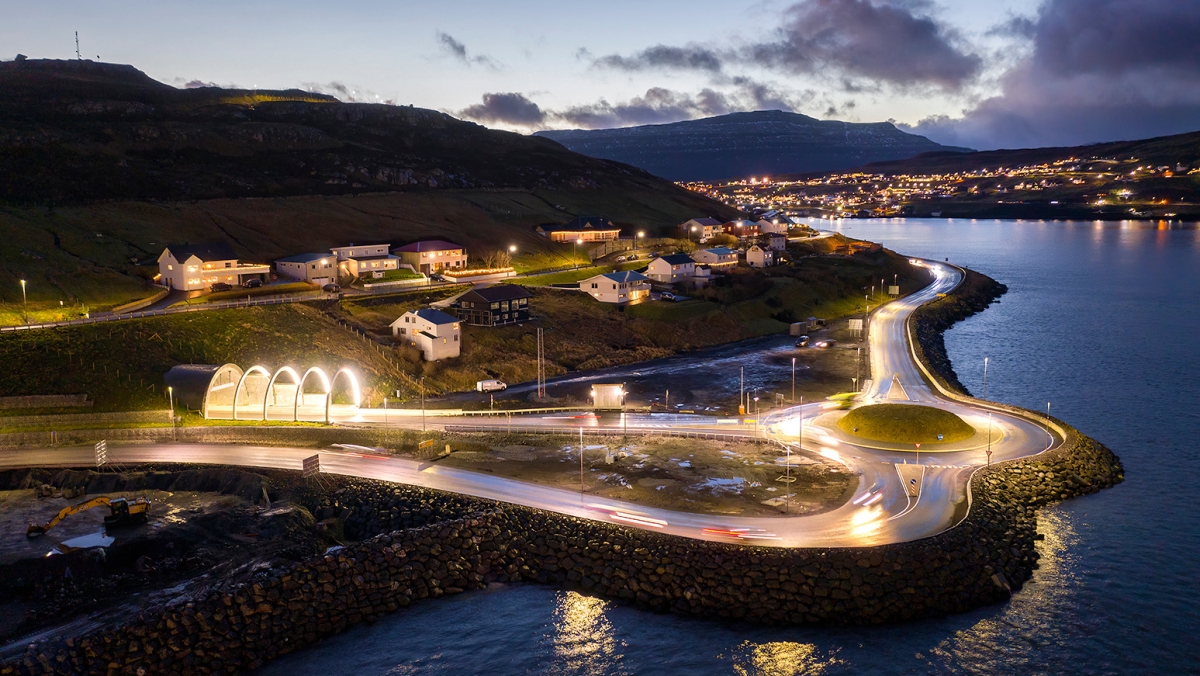Population
10. Feb 2023
Just over 54,250 people lived in the Faroes at the start of 2023

The population growth continues for the ninth consecutive year. This growth has, however, slowed down somewhat compared to previous years, mainly due to a significant drop in the excess of births over deaths. This drop is partially balanced out by a higher net migration figure. The result is a trend reflecting continued population growth.
[px-graph-3]
Net migration up – excess of births down
The population trend is determined by the excess of live births over deaths and net migration, i.e. the difference between the number of immigrants and the number of emigrants. The excess of births accounted for one-fifth of the total population growth in 2022, while net migration accounted for four-fifths. Although the relative population growth is the same as in 2021, the ratio between the excess of births and net migration has changed. In 2021, the excess of births represented one-third of the population growth while net migration made up the remaining two-third. This ratio change is due to a drop in the excess of births and an increase in net migration. The excess of births figure went down due to fewer births and more deaths in 2022. Net migration increased as more people moved to the Faroes than moved away.
Steady emigration – growing immigration
The trend in the graph below shows that migration slowed down in 2020 and started picking up pace again toward the end of 2020.
Emigration increased relatively quickly until autumn 2021 and has since stabilised at a monthly average of 120 people. Immigration figures have been on a steady increase since late 2020 and have increased slightly more than emigration figures. The monthly average of new immigrants now stands at 165 people.
[px-graph-3]
Steady birth rate – declining death rate
The trend in the graph below shows that the unusually high number of deaths in the first half of 2022 has now returned to previous levels, with an average monthly death rate of 30-35. The birth rate has remained steady with a monthly average of 50-55 children for almost a year and a half.
[px-graph-4]
Town achieves city status
The table below shows the population across the 29 municipalities, with details for each town and village on 1 January 2022 and 1 January 2023.
Tórshavn, Runavík and Sjóvar municipalities saw the highest population growth in 2022. These are followed by Nes municipality, which recently surpassed the 1,500 population count required to obtain city status in the Faroes. This brings the number of Faroese municipalities with more than 1,500 inhabitants up to nine.
Nine of the 29 municipalities experienced a population decline in 2022. Worst off was Sumba, whose population declined by 14 people.
[px-graph-4]
Population figures have a one-month lag
The figures have a one-month lag due to delays in registrations, especially regarding address changes, where many registrations are made after the month of address change has ended. To accommodate as many corrections as possible, there is a one-month lag in the data.
About the population figures
The population is defined as all individuals registered in the national register as residents of the Faroe Islands. Population data includes date of birth, gender, place of birth, citizenship, relationship status, and, where applicable, information on immigration and emigration, domestically as well as between the Faroe Islands and other nations.
About the trend
The trend describes the population trend by adjusting for seasonal effects and other error components in the population figure.